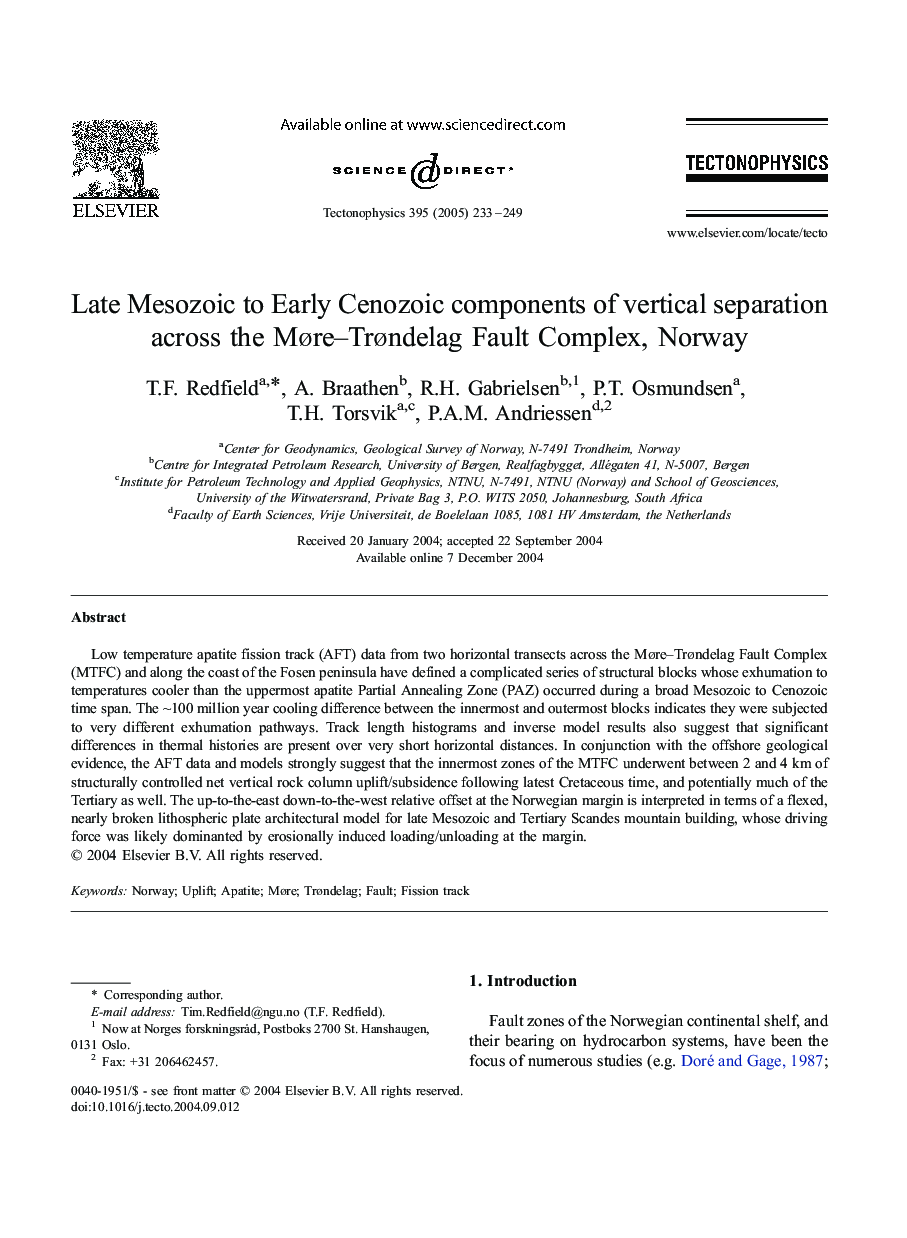| Article ID | Journal | Published Year | Pages | File Type |
|---|---|---|---|---|
| 9527094 | Tectonophysics | 2005 | 17 Pages |
Abstract
Low temperature apatite fission track (AFT) data from two horizontal transects across the Møre-Trøndelag Fault Complex (MTFC) and along the coast of the Fosen peninsula have defined a complicated series of structural blocks whose exhumation to temperatures cooler than the uppermost apatite Partial Annealing Zone (PAZ) occurred during a broad Mesozoic to Cenozoic time span. The â¼100 million year cooling difference between the innermost and outermost blocks indicates they were subjected to very different exhumation pathways. Track length histograms and inverse model results also suggest that significant differences in thermal histories are present over very short horizontal distances. In conjunction with the offshore geological evidence, the AFT data and models strongly suggest that the innermost zones of the MTFC underwent between 2 and 4 km of structurally controlled net vertical rock column uplift/subsidence following latest Cretaceous time, and potentially much of the Tertiary as well. The up-to-the-east down-to-the-west relative offset at the Norwegian margin is interpreted in terms of a flexed, nearly broken lithospheric plate architectural model for late Mesozoic and Tertiary Scandes mountain building, whose driving force was likely dominanted by erosionally induced loading/unloading at the margin.
Related Topics
Physical Sciences and Engineering
Earth and Planetary Sciences
Earth-Surface Processes
Authors
T.F. Redfield, A. Braathen, R.H. Gabrielsen, P.T. Osmundsen, T.H. Torsvik, P.A.M. Andriessen,
